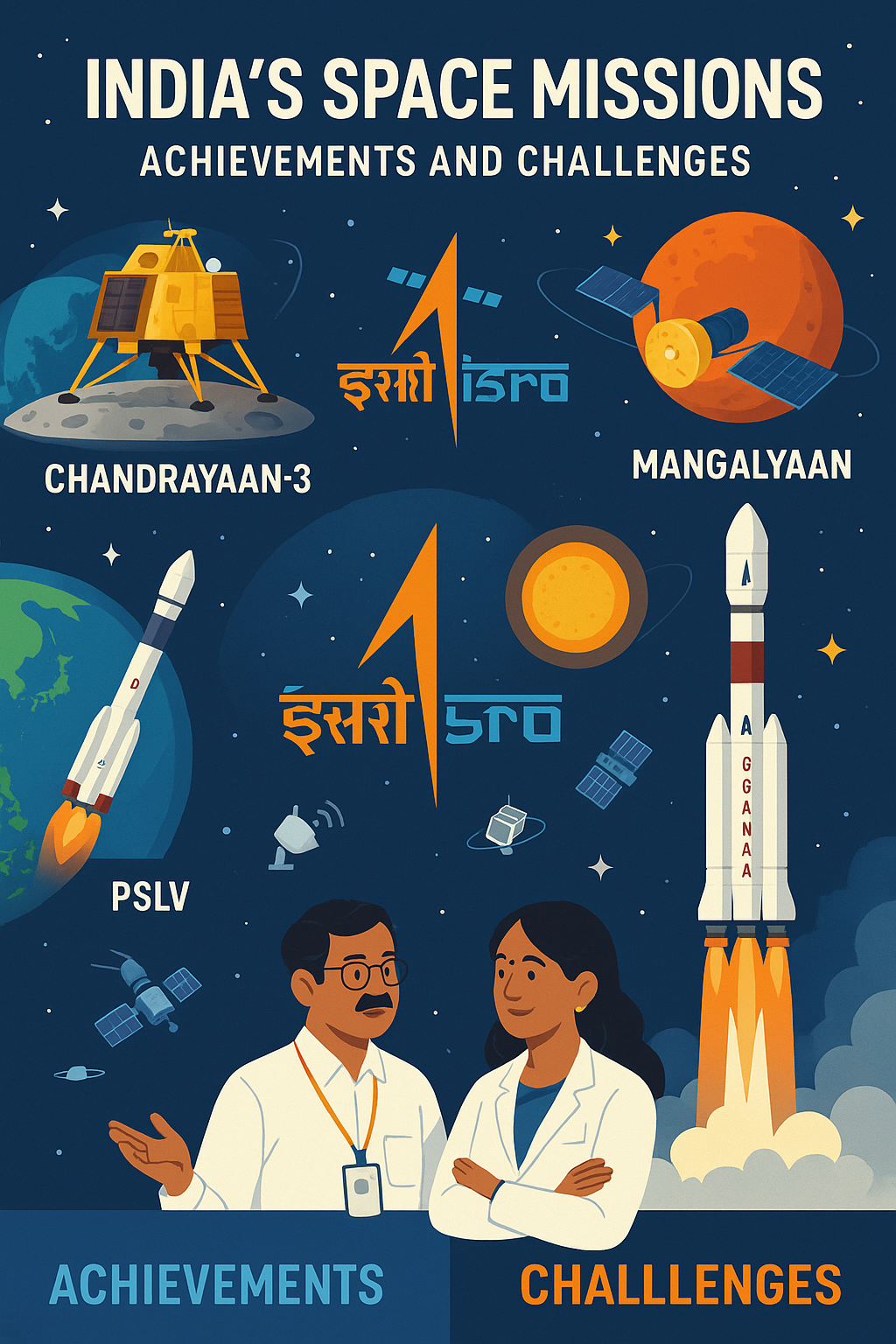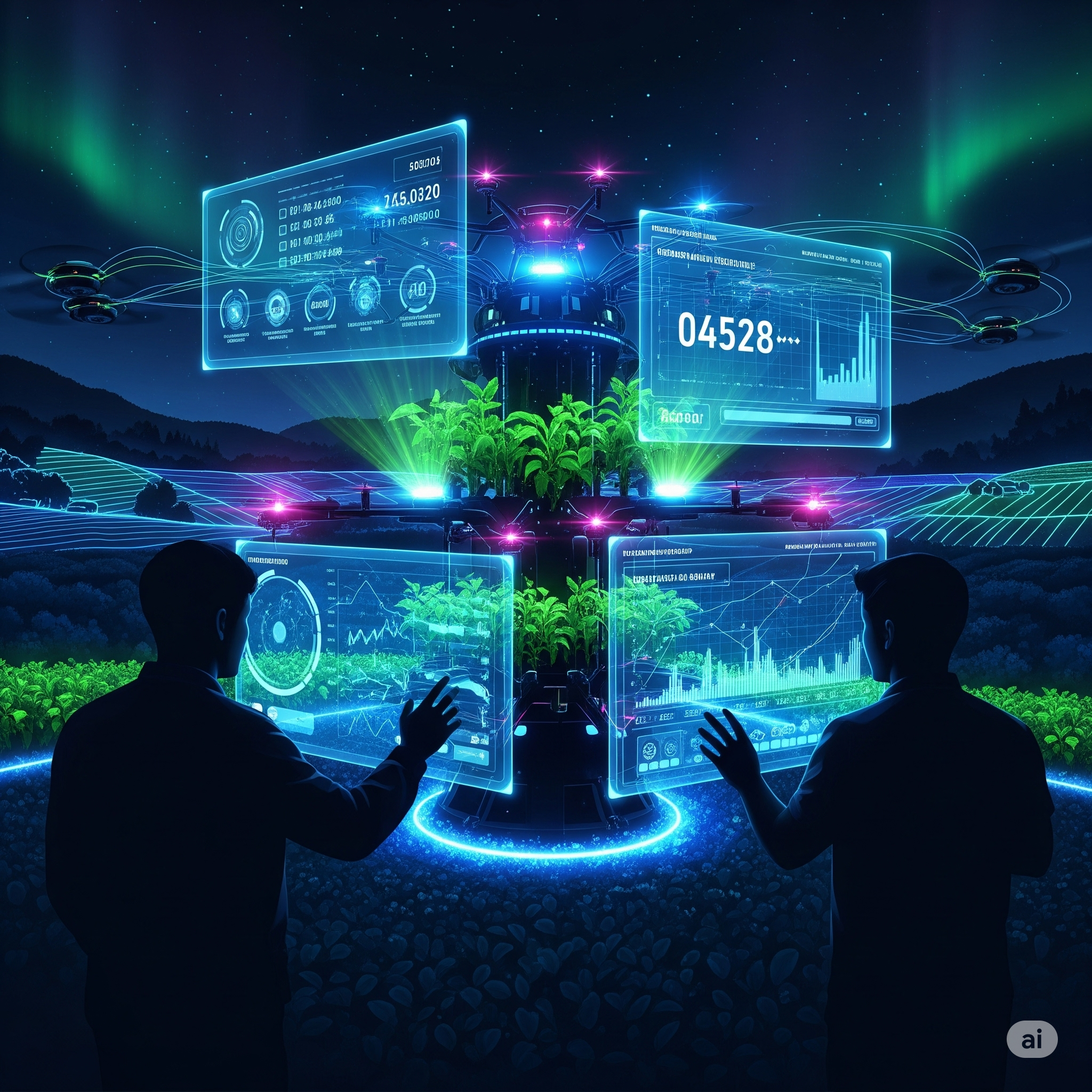India’s journey into space began modestly but has evolved into one of the most ambitious and successful space programs in the developing world. The Indian Space Research Organisation (ISRO), established in 1969, has spearheaded India’s rise as a prominent player in space technology, satellite launches, and interplanetary missions. From launching weather satellites to sending missions to the Moon and Mars, India’s space missions reflect a blend of scientific ingenuity, cost-efficiency, and geopolitical strategy. However, this journey has also faced numerous challenges, including funding constraints, technological hurdles, and international competition.
This article explores India’s major space achievements and the key challenges it continues to face, providing a comprehensive overview for students and enthusiasts of space science.
I. The Evolution of India’s Space Program
1. Historical Background
India’s space program began under the visionary leadership of Dr. Vikram Sarabhai, considered the father of India’s space program. His vision was clear: to use space technology for national development, especially in areas such as communication, weather forecasting, education, and agriculture.
- 1962: Formation of the Indian National Committee for Space Research (INCOSPAR)
- 1969: Establishment of ISRO
- 1975: Launch of India’s first satellite, Aryabhata, from the Soviet Union
2. Key Objectives of ISRO
ISRO’s objectives are primarily centered around:
- Developing space technology and its application in various sectors
- Launching satellites for communication, Earth observation, and navigation
- Developing indigenous launch vehicles
- Undertaking interplanetary exploration
II. Major Achievements of India’s Space Missions
1. Indigenous Launch Capabilities
India’s ability to build and operate its own launch vehicles has been a game-changer.
- SLV (Satellite Launch Vehicle): First attempted in 1979 (failed), but successfully launched Rohini satellite in 1980.
- PSLV (Polar Satellite Launch Vehicle): Became ISRO’s workhorse, with high success rates and the ability to launch multiple satellites. Famous for the PSLV-C37 mission (2017), which launched 104 satellites in one go, a world record.
- GSLV and GSLV Mk III: Used for heavier payloads, including the GSAT series and missions like Chandrayaan-2.
2. Communication and Earth Observation Satellites
India has deployed a vast array of satellites for communication, weather forecasting, disaster warning, and surveillance.
- INSAT (Indian National Satellite System): Used for telecommunications, broadcasting, and meteorology.
- GSAT series: Enhanced India’s communication infrastructure.
- IRS (Indian Remote Sensing Satellites): Crucial for resource mapping, agricultural planning, and disaster management.
3. Chandrayaan Missions – India’s Moon Exploration
- Chandrayaan-1 (2008):
- India’s first mission to the Moon.
- Major achievement: Detected water molecules on the lunar surface.
- Demonstrated ISRO’s capability in deep-space exploration.
- India’s first mission to the Moon.
- Chandrayaan-2 (2019):
- Orbiter successfully entered lunar orbit and continues to function.
- However, the Vikram lander failed to make a soft landing due to a last-minute descent anomaly.
- Orbiter successfully entered lunar orbit and continues to function.
- Chandrayaan-3 (2023):
- Achieved a successful soft landing near the Moon’s south pole.
- Made India the fourth country to land on the Moon and the first to land near the lunar south pole.
- Rover Pragyan conducted key surface-level experiments.
- Achieved a successful soft landing near the Moon’s south pole.
4. Mangalyaan (Mars Orbiter Mission – MOM)
- Launched in 2013, successfully entered Mars orbit in 2014.
- India became the first Asian nation to reach Mars orbit and the first in the world to do so in its maiden attempt.
- The mission cost around $74 million, making it one of the most cost-effective Mars missions in the world.
- Provided valuable data on Martian atmosphere and surface.
5. Aditya-L1 Mission – Solar Mission
- Launched in 2023, India’s first space-based observatory to study the Sun.
- Will study the solar corona, solar wind, and magnetic storms.
- It is stationed at Lagrange Point 1, about 1.5 million km from Earth, ensuring uninterrupted solar observations.
6. Gaganyaan Mission – Human Spaceflight Program
- India’s ambitious plan to send humans into space using its own spacecraft.
- Planned manned launch expected in 2025.
- Includes Vyommitra, a humanoid robot, to be sent before the manned mission.
- Significant collaboration with DRDO and HAL for life support and module development.
III. Strategic and Commercial Advancements
1. International Satellite Launch Services
- ISRO has launched over 400 foreign satellites from countries like the USA, UK, Germany, and Singapore.
- This has positioned India as a reliable and affordable satellite launch partner.
- The Antrix Corporation (ISRO’s commercial arm) and NewSpace India Limited (NSIL) are responsible for commercial operations.
2. Navigation and Surveillance Systems
- NAVIC (Navigation with Indian Constellation):
- India’s regional navigation system for accurate location tracking within the Indian subcontinent.
- Alternative to GPS with military and civilian uses.
- India’s regional navigation system for accurate location tracking within the Indian subcontinent.
- RISAT and Cartosat series:
- High-resolution Earth observation and radar imaging satellites.
- Useful for agriculture, defense, and urban planning.
- High-resolution Earth observation and radar imaging satellites.
3. Private Sector Involvement
- The space sector is opening up to private players, including startups like Skyroot Aerospace, Agnikul Cosmos, and Pixxel.
- Skyroot’s Vikram-S became India’s first privately developed rocket launched in 2022.
- Government has created IN-SPACe to promote private participation in space missions.
IV. Challenges Faced by India’s Space Missions
1. Budget Constraints
- ISRO operates on a relatively modest budget compared to agencies like NASA or ESA.
- While it emphasizes cost-effective solutions, limited funds can restrict advanced R&D and international competitiveness.
2. Technological Limitations
- India is still developing heavy-lift launch capabilities, which restricts missions involving larger payloads and interplanetary cargo.
- Reusable launch technology and spaceplane development remain in early stages.
3. Mission Failures and Risks
- Chandrayaan-2’s lander crash and GSLV rocket failures are examples of the high-risk nature of space missions.
- Technological precision and real-time problem-solving are critical and often hard to perfect.
4. Human Spaceflight Hurdles
- Developing life support systems, escape modules, and astronaut training facilities are complex and resource-intensive.
- Delays in timelines due to the COVID-19 pandemic and technological testing.
5. Global Competition and Geopolitics
- The global space race is intensifying with major investments from countries like China and private firms like SpaceX.
- India needs to balance scientific exploration with strategic goals, including space defense and cybersecurity.
6. Environmental and Ethical Concerns
- Space debris management and sustainable space exploration are growing concerns.
- Launching more satellites increases orbital clutter, posing risks for future missions.
V. The Future of India’s Space Program
1. Deep Space Exploration
- Shukrayaan-1: Proposed mission to study Venus.
- Plans for future Mars and Moon missions, possibly including sample return missions.
- Collaboration with global space agencies for deeper solar system exploration.
2. Expansion of Commercial Space Economy
- India aims to increase its share of the global space economy (currently around 2%).
- Growth in satellite-based services like remote sensing, broadband internet, and AI-driven space tech.
3. Defense and Strategic Capabilities
- Development of anti-satellite (ASAT) weapons and space-based surveillance platforms.
- Strengthening of India’s position in space diplomacy through peaceful yet strategically relevant missions.
4. Space Education and Workforce
- Increased focus on space education, talent development, and research collaborations with universities.
- Initiatives like the Young Scientist Programme (YUVIKA) to inspire school students.
VI. Conclusion
India’s space missions stand as a testament to the country’s scientific excellence, strategic foresight, and innovative spirit. From launching satellites on shoestring budgets to landing on the Moon’s south pole, ISRO has carved a niche in global space history. While challenges such as limited budgets, technological gaps, and geopolitical dynamics persist, India’s space ambitions continue to soar.
With a focus on sustainable innovation, international collaboration, and private sector integration, the future of India’s space program looks promising. As the country ventures further into the realms of human spaceflight, solar observation, and planetary exploration, India not only advances its scientific capabilities but also inspires millions across the globe.
Summary Points
- Achievements:
- Chandrayaan-1, Chandrayaan-3, Mangalyaan, Aditya-L1
- Record satellite launches with PSLV
- Indigenous launch vehicles and satellite systems
- Challenges:
- Budgetary and technological limitations
- Human spaceflight complexities
- Geopolitical competition and space debris
- Future Focus:
- Gaganyaan, Shukrayaan, deep space missions
- Expansion of commercial space industry
- Strengthening space education and private partnerships




